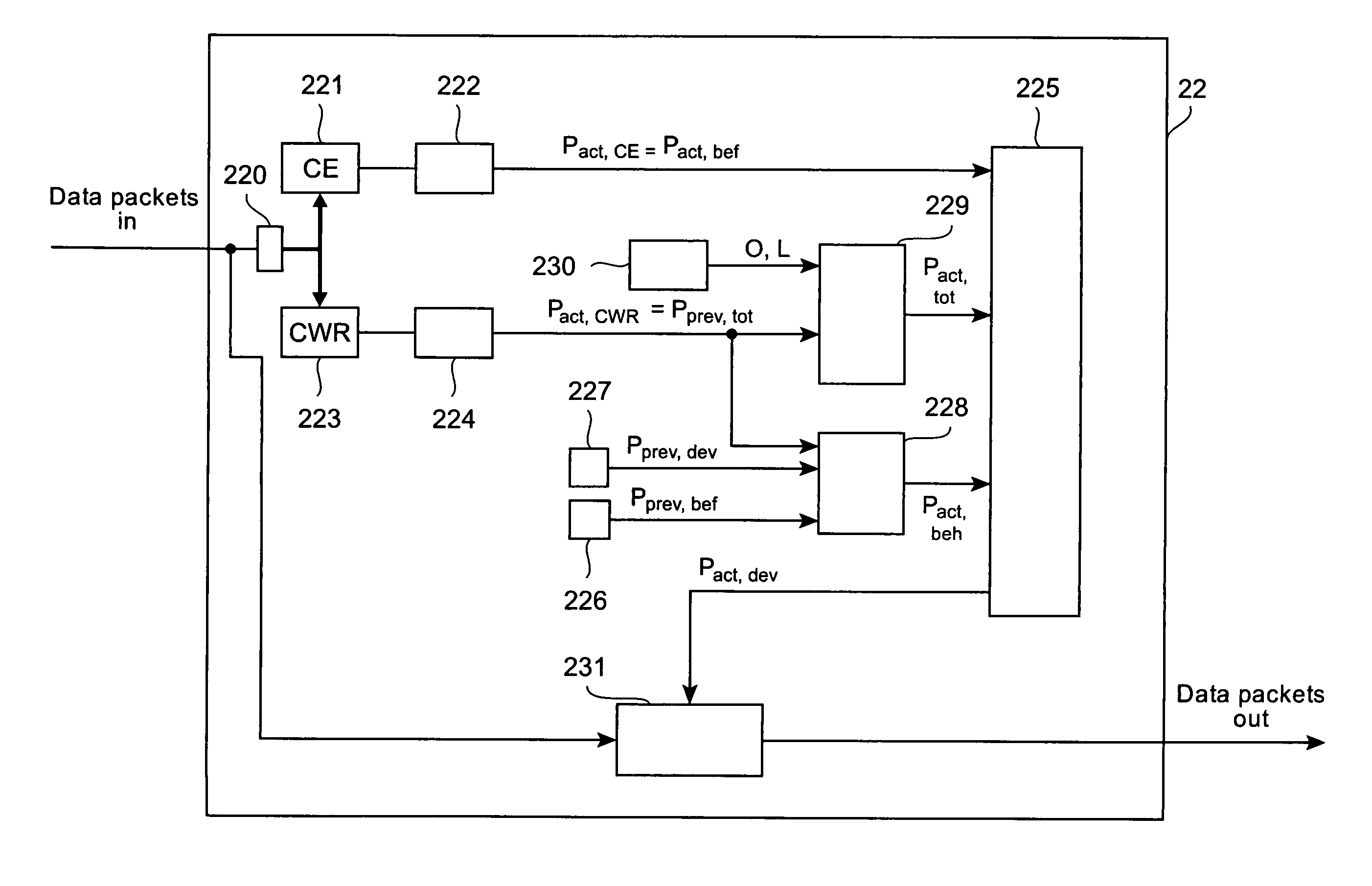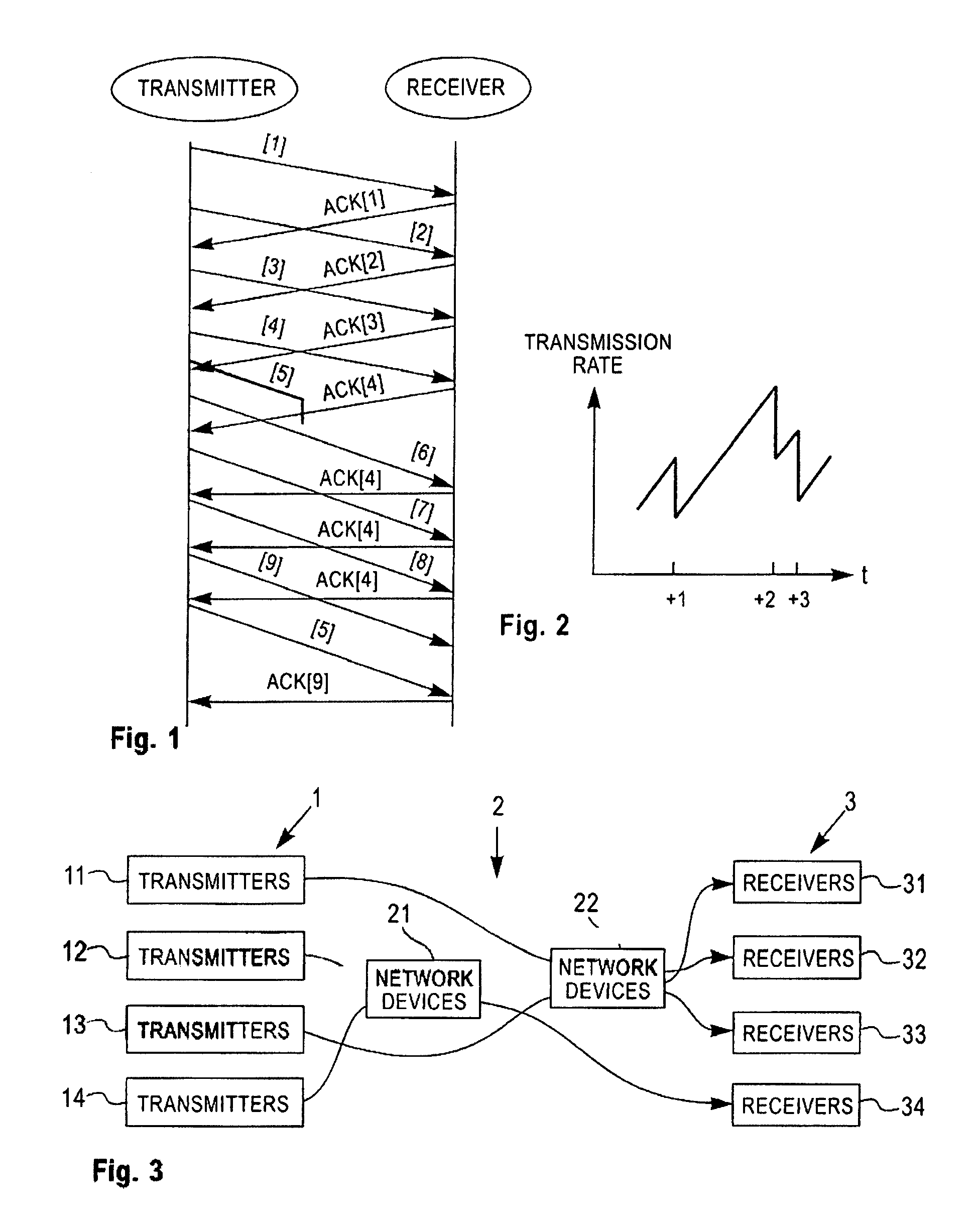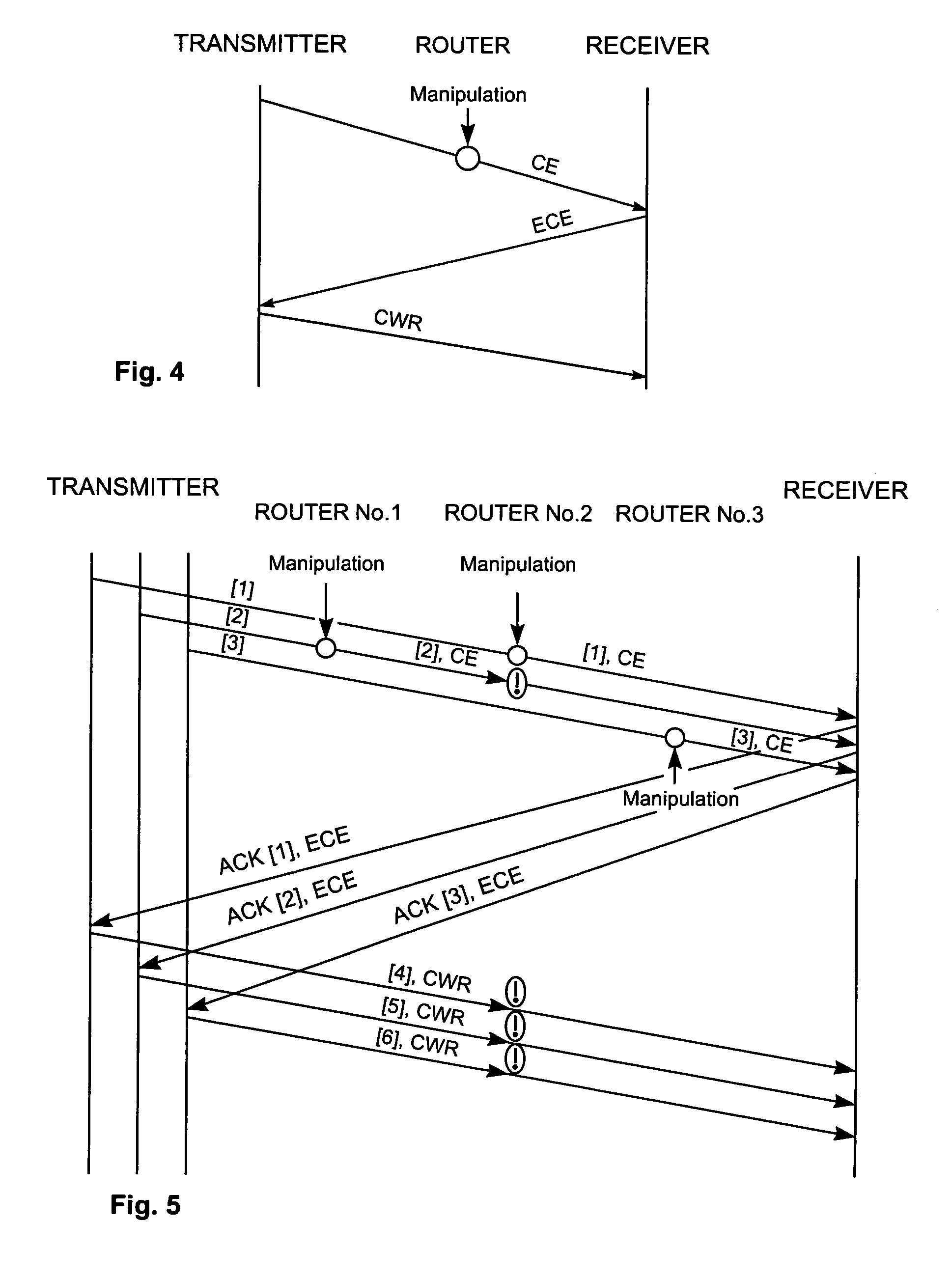Controlling data packet flows by manipulating data packets according to an actual manipulation rate
a data packet and data processing technology, applied in data switching networks, instruments, frequency-division multiplexes, etc., can solve problems such as data packet loss, data packet overflow, packet loss of several packets, etc., to achieve optimal router utilization, reduce queuing delays, and high accuracy
- Summary
- Abstract
- Description
- Claims
- Application Information
AI Technical Summary
Benefits of technology
Problems solved by technology
Method used
Image
Examples
Embodiment Construction
[0053]FIG. 3 illustrates a block diagram of a network with transmitters 1, in particular transmitters 11, 12, 13, 14, with receivers 3, in particular receivers 31, 32, 33, 34, and network devices 2, in particular network devices 21 and 22. Arrows represent data flows from respective transmitters 1 to respective receivers 3 via network devices 2. The diagram shows of only a simplified structure of a network. Network device 22 for example is supposed to support the proposed methods for controlling data flows. Not necessarily all network devices within a network have to support one of the proposed methods, since an overall benefit with regard to congestion control can be achieved even when only selected network devices, or even only one network device implements a method proposed.
[0054]In all further embodiments illustrated in the following figures, it is made use of a congestion notification scheme that is known as Explicit Congestion Notification (ECN [RFC3168]). The corresponding RF...
PUM
 Login to View More
Login to View More Abstract
Description
Claims
Application Information
 Login to View More
Login to View More - R&D
- Intellectual Property
- Life Sciences
- Materials
- Tech Scout
- Unparalleled Data Quality
- Higher Quality Content
- 60% Fewer Hallucinations
Browse by: Latest US Patents, China's latest patents, Technical Efficacy Thesaurus, Application Domain, Technology Topic, Popular Technical Reports.
© 2025 PatSnap. All rights reserved.Legal|Privacy policy|Modern Slavery Act Transparency Statement|Sitemap|About US| Contact US: help@patsnap.com



